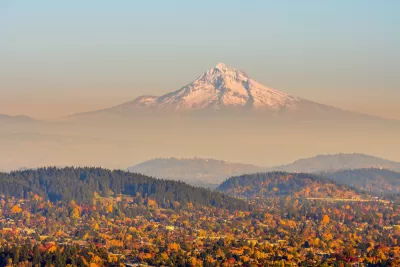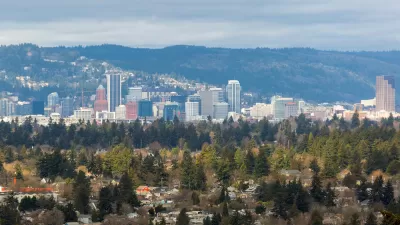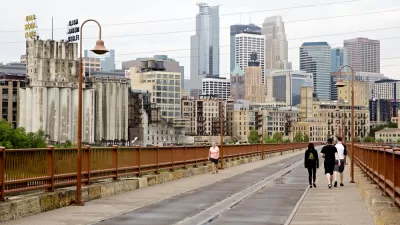Portland wants to add density but doesn't want to displace current residents of low- and middle-income neighborhoods.

Portland's Residential Infill Project, which would allow duplexes, triplexes, and fourplexes in neighborhoods that previously only allowed single-family detached homes, is evolving.
Eliot Njus explains recent changes made to the proposed plan:
Portland is packaging its plan for more density in single-family neighborhoods with a broad proposal to prevent displacement of low-income renters and minority groups, including such things as affordable homeownership programs and stronger tenant protections.
The effort is intended to assuage concerns about the city’s Residential Infill Project, which would allow duplexes, triplexes and four-plexes in neighborhoods traditionally reserved for single-family houses. Critics say the infill project would encourage development that could push out longtime residents.
The effort in Portland mirrors a recent comprehensive plan approved in Minneapolis in its allowance for multiple units on parcels in single-family neighborhoods. The plan has also been characterized in the past as a measure to control the proliferation of McMansions, similar to a law under consideration in Seattle.
The state of Oregon also approved a law banning single-family zoning earlier this year. Njus explains how the new state law affects the process of writing this new local law:
The Residential Infill Project has been in the works for more than four years, but the landscape changed this summer when the Legislature approved House Bill 2001, which requires major cities to allow up to four units per lot in most single-family neighborhoods. The city proposal would largely meet the requirements of the new law, but some tweaks will be needed.
For more background on the Residential Infill Project, see also articles from November 2016 and March 2019 that cast doubt into the effectiveness of the changes proposed by the Residential Infill Project.
FULL STORY: Portland seeks to address worries about infill housing plan with anti-displacement push

Alabama: Trump Terminates Settlements for Black Communities Harmed By Raw Sewage
Trump deemed the landmark civil rights agreement “illegal DEI and environmental justice policy.”

Planetizen Federal Action Tracker
A weekly monitor of how Trump’s orders and actions are impacting planners and planning in America.

The 120 Year Old Tiny Home Villages That Sheltered San Francisco’s Earthquake Refugees
More than a century ago, San Francisco mobilized to house thousands of residents displaced by the 1906 earthquake. Could their strategy offer a model for the present?

Ken Jennings Launches Transit Web Series
The Jeopardy champ wants you to ride public transit.

BLM To Rescind Public Lands Rule
The change will downgrade conservation, once again putting federal land at risk for mining and other extractive uses.

Indy Neighborhood Group Builds Temporary Multi-Use Path
Community members, aided in part by funding from the city, repurposed a vehicle lane to create a protected bike and pedestrian path for the summer season.
Urban Design for Planners 1: Software Tools
This six-course series explores essential urban design concepts using open source software and equips planners with the tools they need to participate fully in the urban design process.
Planning for Universal Design
Learn the tools for implementing Universal Design in planning regulations.
Clanton & Associates, Inc.
Jessamine County Fiscal Court
Institute for Housing and Urban Development Studies (IHS)
City of Grandview
Harvard GSD Executive Education
Toledo-Lucas County Plan Commissions
Salt Lake City
NYU Wagner Graduate School of Public Service





























